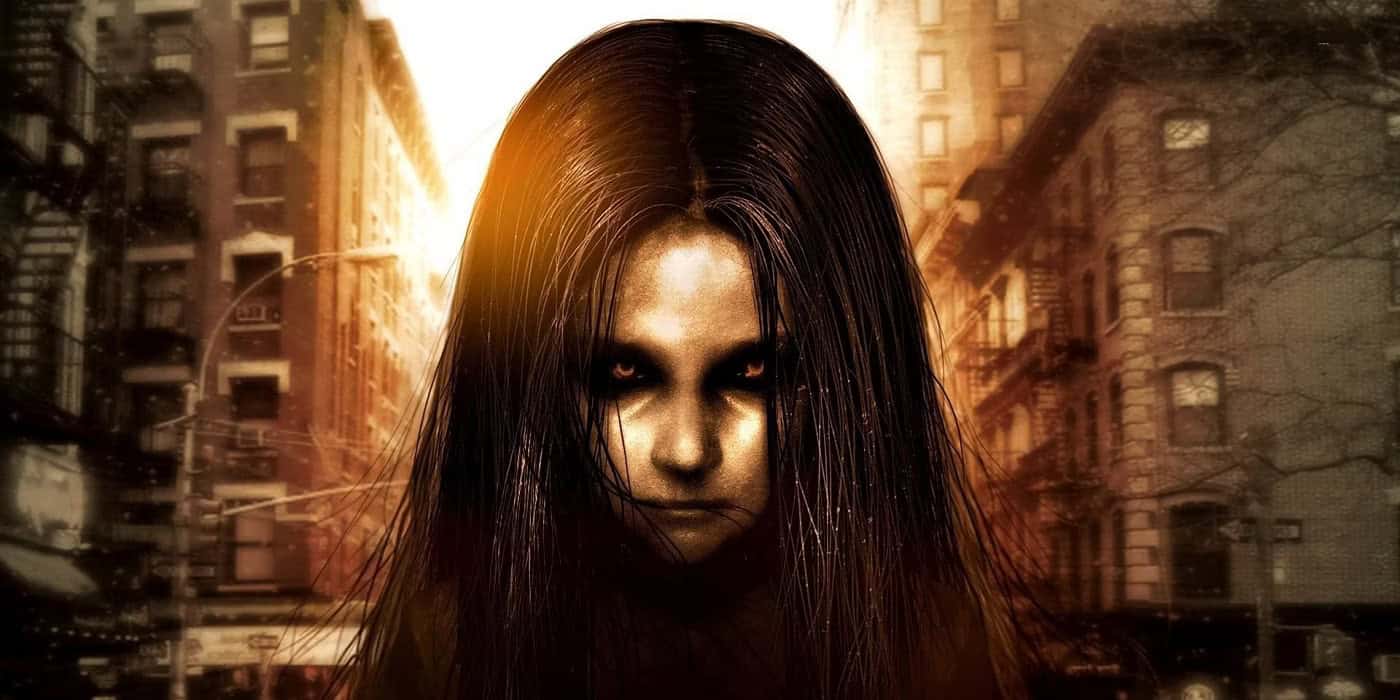The explosion of the FPS genre in the 1990s would eventually give way to an entirely new breed of first-person shooter at the dawn of the millennium. At some point in the latter half of the decade, games in the genre would go from being described as “Doom clones” to being more accurately labeled as “first-person shooters”, signaling that developers could begin to experiment with the mechanics and core elements in ways that would evolve the genre well beyond id Software’s 1993 classic. The next wave of first-person shooter games from the 2000s would include a mix of titles both unique and inventive, with some of the games’ signature mechanics going on to spawn their own subgenres within the larger FPS umbrella.
Several of the most important and iconic games in the genre can chart their origin to the 2000s, with all-time classics like Halo and Halo 2, Half-Life 2, Crysis, and others arriving during the decade. While all of those titles absolutely belong on a list of the “best” first-person shooters of the era, this list focuses on the titles that push the envelope in terms of the intensity of their gameplay and the implementation of over-the-top mechanics unique to those experiences. Whether talking about FPS games with psychic abilities, demon possession, sci-fi body horror, or other unique spins on the genre, these are the most insane first-person shooters released between 2000 and 2009.
10. XIII
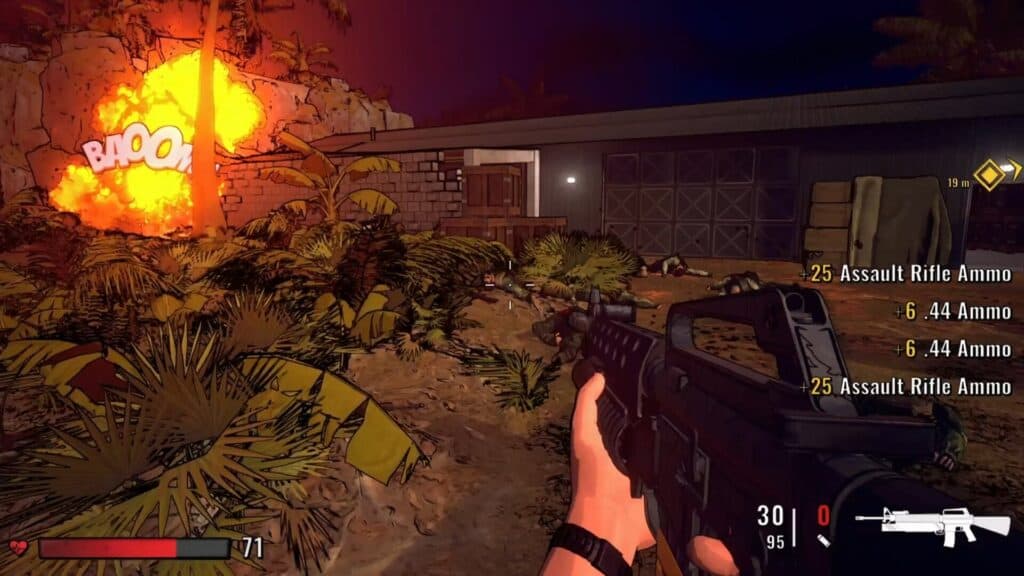
- Release Date — November 18, 2003
- Release Platforms — GameCube, PC, PlayStation 2, Xbox
- Metacritic Score — 74% (Mixed or Average)
Ubisoft’s XIII is an excellent and unique first-person shooter that gives players a solid mix of all-out, guns-blazing action and silent takedowns. An adaptation of a Belgian graphic novel series, XIII places players into the role of a spy with amnesia who must clear their name in the wake of a high-profile political assassination. Accordingly, XIII utilizes a captivating cel-shaded art style that gives it the appearance of a comic book come to life. The game would receive a remake in 2020, but it’s the original version of XIII that stands as the superior experience thanks to its pitch-perfect comic book aesthetic, excellent story and voice-acting (with David Duchovny providing the voice of the protagonist), and entertaining blend of action and stealth.
9. Quake 4
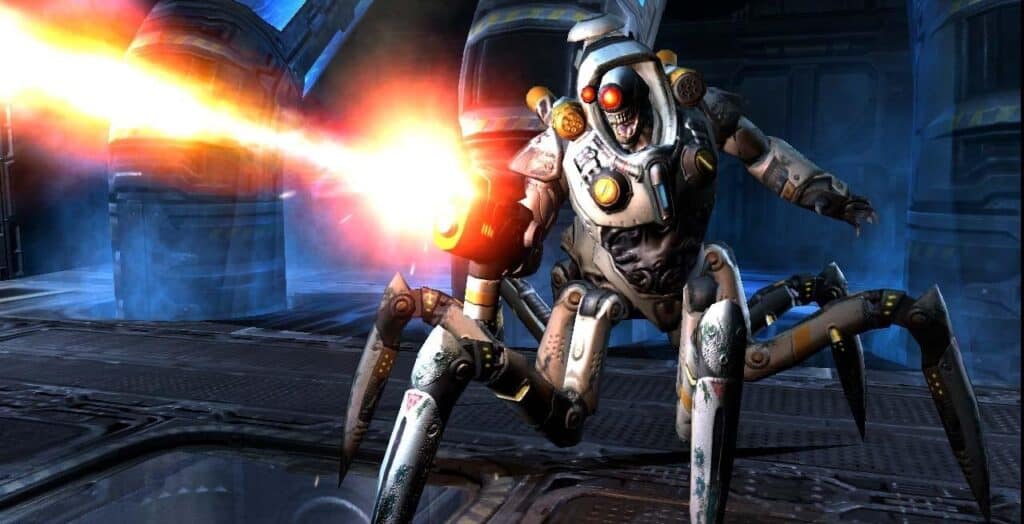
- Release Date — October 11, 2005
- Release Platforms — PC, Xbox 360
- Metacritic Score — 81% (Generally Favorable)
The Quake series is nothing if not adventurous, continually switching things up with each mainline entry to reinvent the series. After the first two Quake games included a single-player campaign to accompany their focus on Deathmatch-style arena shooting, Quake III Arena would go full-multiplayer and become the premier game in the burgeoning arena shooter subgenre of FPS. Subsequently, Quake 4 sees developer Raven Software collaborate with id Software to develop a proper sequel to Quake II, and Quake 4 features some excellent fast-paced shooting in line with the rest of the franchise. The stomach-churning body horror segment about halfway through the campaign sets the game apart, though, as players experience the main character’s gruesome transformation into one of the techno-organic Strogg.
8. Left 4 Dead 2
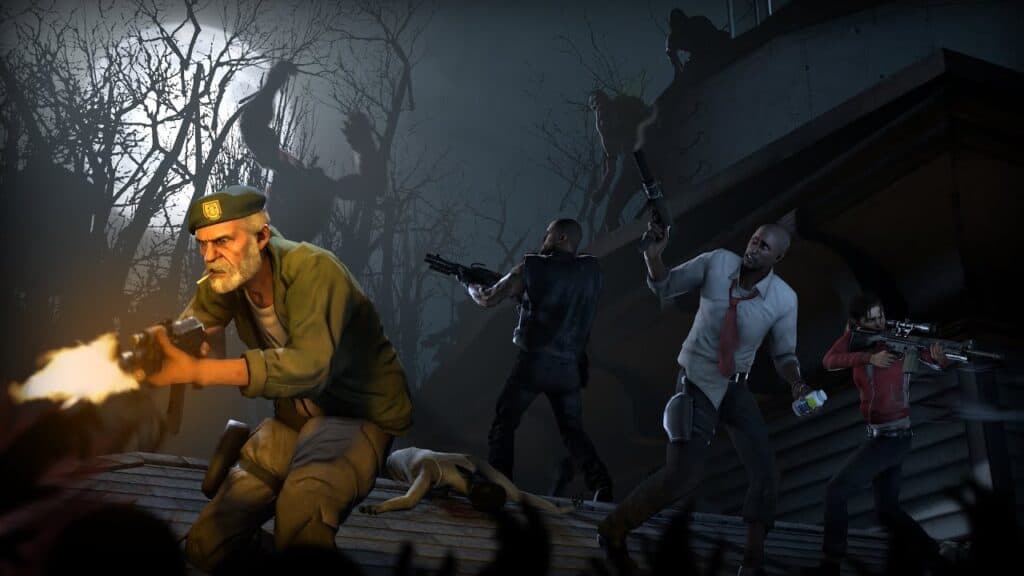
- Release Date — November 17, 2009
- Release Platforms — PC, Xbox 360
- Metacritic Score — 89% (Generally Favorable)
Valve’s Left 4 Dead 2 is one of the greatest co-op shooters of all time, and its sequel is bigger and better in just about every way. Though the character roster and level selection of the original Left 4 Dead will always have a special place in the heart of series fans, there’s no denying that Left 4 Dead 2 introduces a more varied arsenal, impactful and satisfying melee combat, and some truly terrifying and stressful moments while staring down a massive zombie horde with 3 friends in co-op. The Left 4 Dead series would continue in spirit with games like Evolve and Back 4 Blood, but the original Left 4 Dead sequel is still simultaneously peak cooperative first-person shooting and one of the best zombie games from the era when it seemed like the undead were everywhere.
7. Prey
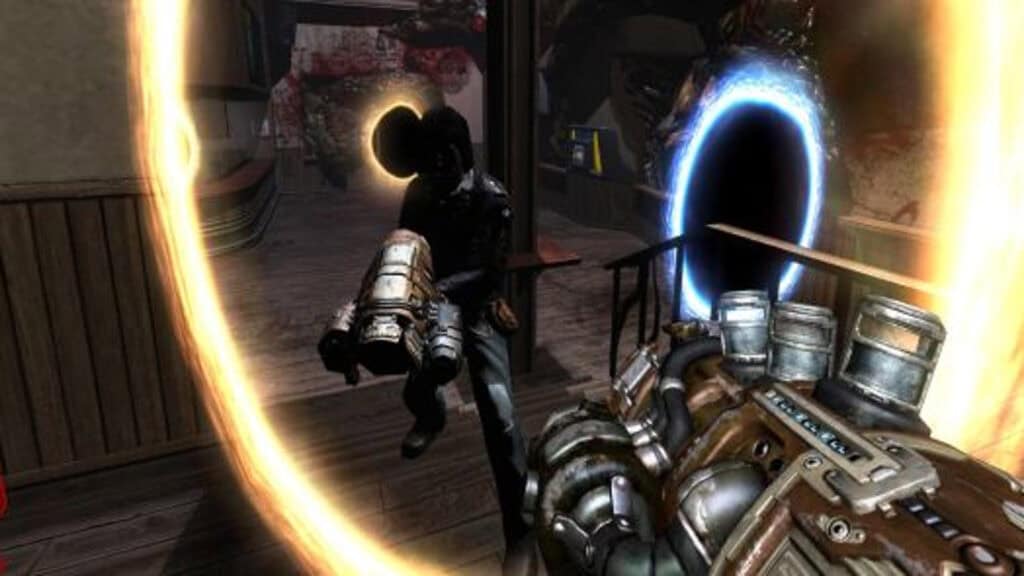
- Release Date — July 11, 2006
- Release Platforms — PC, Xbox 360
- Metacritic Score — 81% (Generally Favorable)
Not to be confused with the Prey reboot developed by Arkane, 2006’s Prey is a mind-bending FPS from 3D Realms and Human Head Studios. A full year before Valve would blow players away with the realistic physics and reality-tearing power of the Aperture Science Portable Quantum Tunneling Device in Portal, Prey would give its protagonist the same ability in its excellent single-player campaign. While the shooting and exploration are pretty standard fare for an FPS of the era, Prey‘s inclusion of a perspective-shifting portal device ends up earning it a special place in players’ hearts and minds thanks to how it completely transforms the simple act of traversal and adds a whole new dimension to both combat and puzzle-solving.
6. Return to Castle Wolfenstein
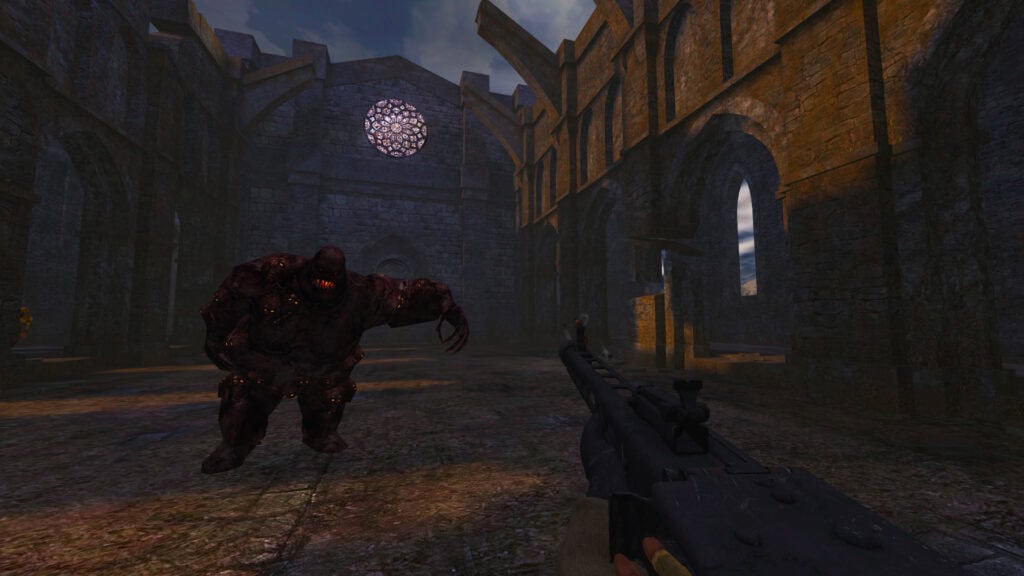
- Release Date — May 6, 2003
- Release Platforms — PC, PlayStation 2, Xbox
- Metacritic Score — 84% (Generally Favorable)
This oft-forgotten entry in the Wolfenstein series is actually one of the better FPS titles of the era thanks to how it blends classic gameplay with some more modern touches. The highlight of Return to Castle Wolfenstein is absolutely its combat, and framing that combat are some excellently designed levels, a captivating single-player campaign with a strong narrative, and a competent multiplayer mode that is plenty of fun either locally or online. What makes this game one of the more insane shooters of the 2000s is its occult-tinged narrative and selection of grotesque monsters to contend with, with series hero BJ Blazkowicz facing off against some of the most horrific abominations in FPS history.
5. S.T.A.L.K.E.R.: Shadow of Chernobyl
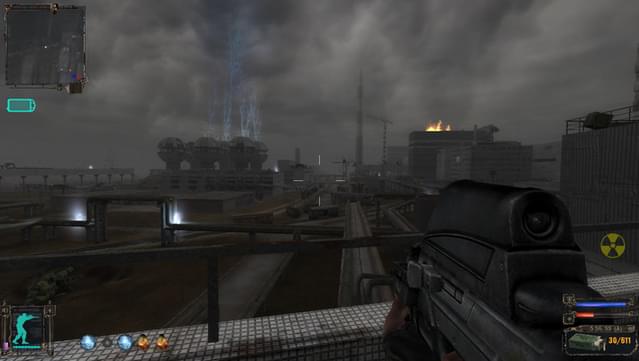
- Release Date — March 20, 2007
- Release Platforms — PC
- Metacritic Score — 82% (Generally Favorable)
Long before the excellent Metro games, S.T.A.L.K.E.R.: Shadow of Chernobyl would mix elements of first-person shooters and survival horror games to create a title unlike any other. The highlight of S.T.A.L.K.E.R. is its immersive sim gameplay and open-world sandbox that is populated with some of the more interesting threats in a first-person shooter. Some enemies can use telekinetic or telepathic powers obtained through nuclear radiation to completely disorient and unnerve the player, making the act of playing S.T.A.L.K.E.R. an exercise in tension and managing sanity. Several titles utilize post-apocalyptic settings, but few make you actually feel like you’re adventuring through the end of the world like S.T.A.L.K.E.R.
4. Red Faction
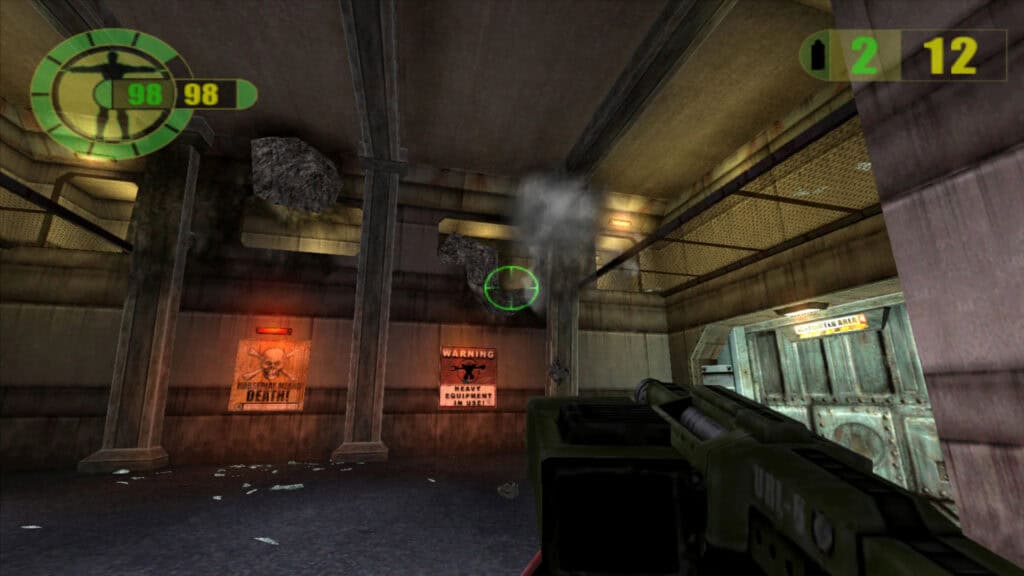
- Release Date — May 22, 2001
- Release Platforms — PC, PlayStation 2
- Metacritic Score — 88% (Generally Favorable)
In terms of first-person shooters which are both important titles in the genre and completely insane, it doesn’t get much better than Red Faction. This groundbreaking FPS was released on both the PC and the PlayStation 2 in 2001, ushering in the greatest innovation for console-based first-person shooters with the implementation of a dual-analog control scheme. Beyond that, though, Red Faction is one of the first FPS games to introduce fully destructible environments, which sounds like a gimmick until you quickly realize that nearly every square inch of the game’s geometry is fair game. And with plenty of rockets and remote detonators eventually at the player’s disposal, things can get very out of hand very quickly in the best way.
3. The Darkness
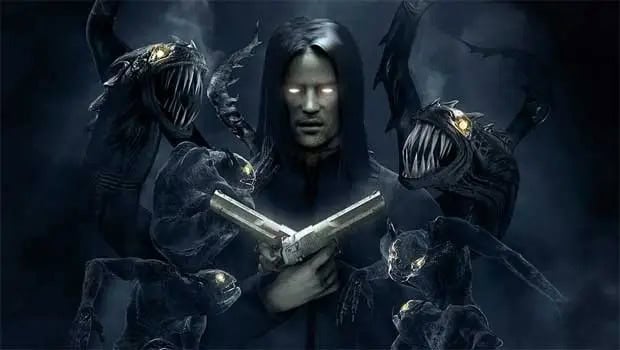
- Release Date — June 25, 2007
- Release Platforms — PlayStation 3, Xbox 360
- Metacritic Score — 82% (Generally Favorable)
The second shooter on our list to have its origins in comic books is 2007’s The Darkness, based on the Top Cow title of the same name by legendary creator Marc Silvestri. In The Darkness, players take on the role of former mafia hitman Jackie Estacado and the demonic presence that possesses him after his onetime boss fails at an assassination attempt. As you might expect, the game goes completely off the rails with how it implements both dual-wielding gunplay and Jackie’s demonic powers courtesy of the titular Darkness, and the game features some truly shocking kill animations and a twisted, diabolical sense of humor pulled straight from the pages of the comic.
2. Far Cry
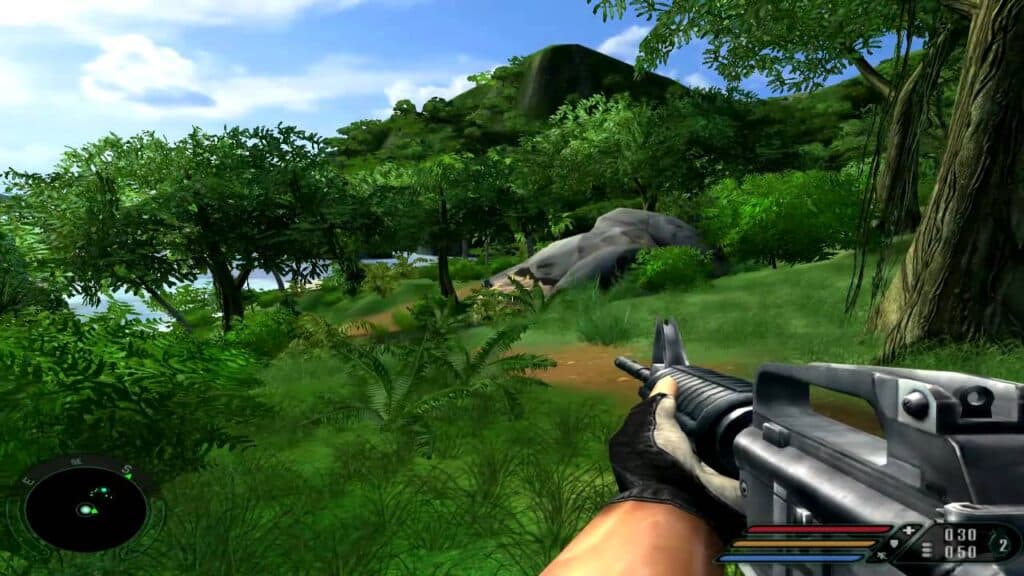
- Release Date — March 23, 2004
- Release Platforms — PC
- Metacritic Score — 89% (Generally Favorable)
Though the series would eventually fall under the Ubisoft umbrella and become a fairly rote open-world FPS with RPG-style character progression, the original Far Cry was nothing short of revolutionary. The first game in the series is developed by Crytek (who would later go on to revolutionize shooters once again with Crysis just a few years later) and is one of the first truly non-linear and open-world first-person shooter games. The tropical setting and open-world sandbox give players plenty of options in how they tackle each and every encounter, and the original Far Cry practically thrives the more chaos the player creates. Sure, a stealth approach is just as viable, but when causing a commotion is this fun it’s worth taking the loud route.
1. F.E.A.R.
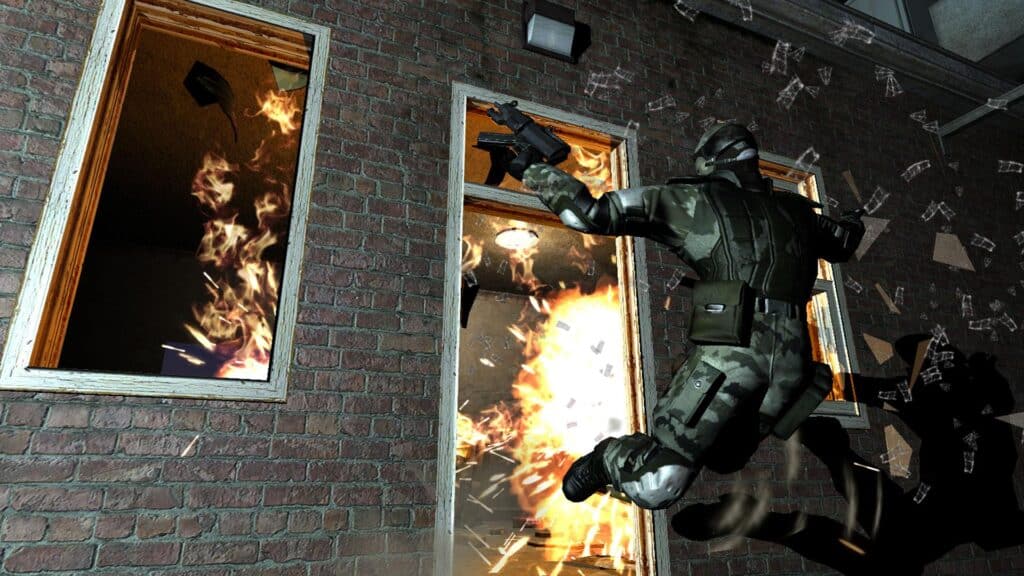
- Release Date — October 17, 2005
- Release Platforms — PC, Xbox 360
- Metacritic Score — 88% (Generally Favorable)
F.E.A.R. is one of the rare first-person shooter games of the 2000s in that it continues to get better with age, especially in the wake of few developers ever attempting its signature blend of FPS and survival horror gameplay. Part Call of Duty and part Silent Hill, F.E.A.R. places players as a member of a special forces team tasked with addressing supernatural threats. Though the game starts off as a pretty standard FPS title, things eventually take a hard left turn into psychological horror after the player encounters the game’s antagonist Alma, and is then forced to contend not only with physical threats but also otherworldly ones. The inclusion of telekinetic powers adds a unique wrinkle to F.E.A.R.‘s combat, but the game’s standard shooting mechanics are so good that they end up just being icing on the cake.
The image featured at the top of this post is ©F.E.A.R. official artwork.
